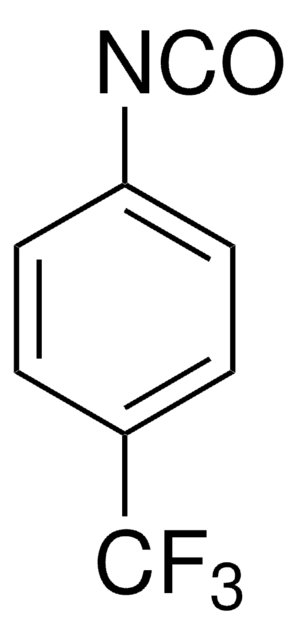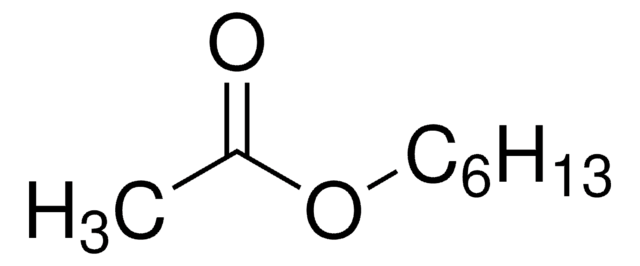All Photos(1)
About This Item
Linear Formula:
CH3(CH2)5O(CH2)5CH3
CAS Number:
Molecular Weight:
186.33
Beilstein/REAXYS Number:
1738177
EC Number:
MDL number:
UNSPSC Code:
12352100
PubChem Substance ID:
NACRES:
NA.22
Recommended Products
assay
97%
refractive index
n20/D 1.4204 (lit.)
bp
228-229 °C (lit.)
density
0.793 g/mL at 25 °C (lit.)
SMILES string
CCCCCCOCCCCCC
InChI
1S/C12H26O/c1-3-5-7-9-11-13-12-10-8-6-4-2/h3-12H2,1-2H3
InChI key
BPIUIOXAFBGMNB-UHFFFAOYSA-N
Looking for similar products? Visit Product Comparison Guide
Related Categories
Application
Dihexyl ether has been used as:
- supported liquid membrane during hollow-fiber liquid-phase microextraction method for determination of nitrophenolic compounds from atmospheric aerosol particles
- an extraction solvent to detect avermectins in stream water by hollow-fiber-assisted liquid-phase microextraction technique coupled with LC-MS/MS
signalword
Warning
hcodes
Hazard Classifications
Aquatic Acute 1 - Aquatic Chronic 2 - Skin Sens. 1B
Storage Class
10 - Combustible liquids
wgk_germany
WGK 2
flash_point_f
172.4 °F - closed cup
flash_point_c
78 °C - closed cup
ppe
Eyeshields, Gloves, multi-purpose combination respirator cartridge (US)
Choose from one of the most recent versions:
Already Own This Product?
Find documentation for the products that you have recently purchased in the Document Library.
Customers Also Viewed
Mohammad Bazregar et al.
Journal of chromatography. A, 1429, 13-21 (2015-12-30)
A simple and efficient approach is introduced for the improvement of the clean-up and applicability of the dispersive liquid-liquid microextraction (DLLME) method in complicated matrices. For this purpose, two dispersive microextraction methods were combined, and the tandem dispersive liquid-liquid microextraction
María Ramos Payán et al.
Journal of chromatography. A, 1556, 29-36 (2018-05-08)
A new geometry for a versatile microfluidic-chip device based liquid phase microextraction was developed in order to enhance the preconcentration in microfluidic chips and also to enable double-flow and stopped-flow working modes. The microchip device was combined with a HPLC
Ali Reza Fakhari et al.
Electrophoresis, 36(24), 3034-3041 (2015-09-19)
In this paper, for the first time, surfactant-assisted electromembrane extraction coupled with capillary electrophoresis with UV detector was introduced for the extraction of acidic drugs from biological fluids. In this technique, in the presence of the nonionic surfactant in the
María Ramos-Payan et al.
Talanta, 165, 496-501 (2017-02-06)
A fast double-flow microfluidic based liquid phase microextraction (DF-µLPME) combined with a HPLC-UV procedure using diode array detection has been developed for the determination of the four most widely used parabens: Ethyl 4-hydroxybenzoate (EtP), Propyl 4-hydroxybenzoate (PrP), Butyl 4-hydroxybenzoate (BuP)
Cristina Román-Hidalgo et al.
Talanta, 199, 290-295 (2019-04-07)
A chitosan membrane composed by 60% (w/w) chitosan and 40% (w/w) Aliquat®336 has been proposed as a new biopolymeric support for electromembrane extraction. The new support has been characterized by Scanning Electron Microscopy, resulting a 30-35 µm thickness. Amoxicillin, nicotinic acid
Our team of scientists has experience in all areas of research including Life Science, Material Science, Chemical Synthesis, Chromatography, Analytical and many others.
Contact Technical Service















